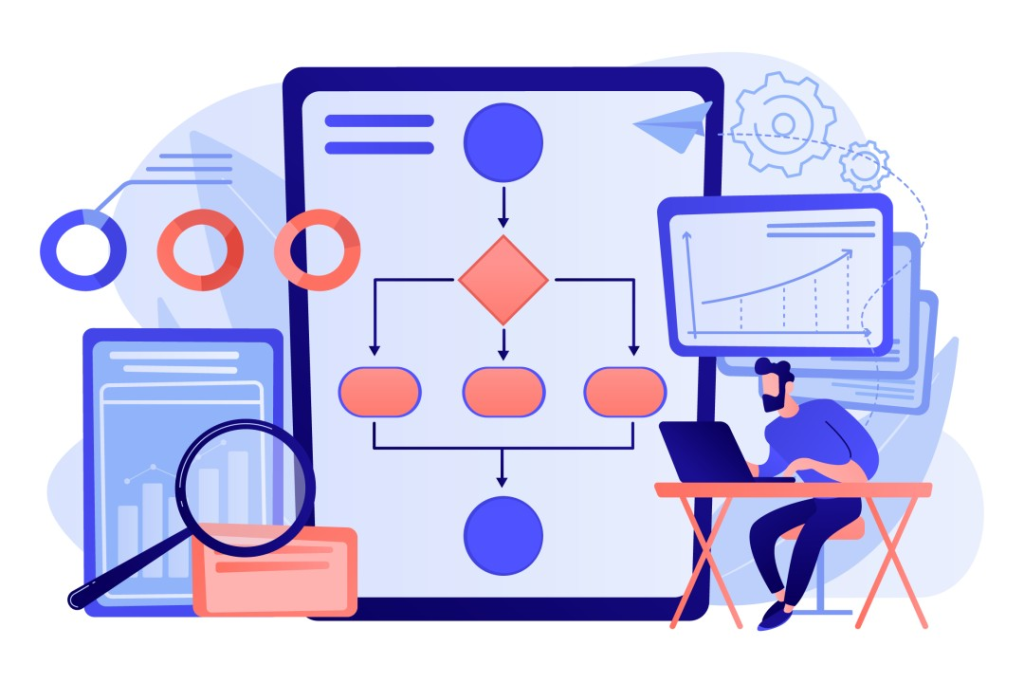In the highly competitive world of e-commerce, data analytics has emerged as a powerful tool for businesses to drive growth. By analyzing vast amounts of data, e-commerce companies can gain valuable insights that help them make informed decisions and stay ahead of the competition. Here’s how data analytics can be effectively used to boost e-commerce growth.

I. Understanding Customer Behavior
A. Analyzing Purchase History
- Identifying Buying Patterns
Data analytics allows e-commerce businesses to look closely at customers’ purchase history. By doing so, they can identify patterns such as the frequency of purchases, the types of products bought together, and the average order value. For example, an online electronics store might notice that customers who buy a smartphone often also purchase a phone case and a screen protector. This insight can be used to create bundled offers, increasing the average order value. - Predicting Future Purchases
Based on the purchase history, businesses can use data analytics to predict what customers are likely to buy in the future. Machine learning algorithms can analyze past behavior and identify trends. For instance, if a customer has regularly bought running shoes every six months, the system can predict when they might need a new pair and target them with relevant promotions.
B. Studying Website Traffic
- Tracking User Journey
Data analytics tools can track how users navigate through an e-commerce website. This includes which pages they visit first, the paths they take, and where they drop off. An online fashion store might find that many users abandon their shopping carts on the payment page. By identifying this issue, the store can optimize the payment process to reduce cart abandonment. - Understanding Traffic Sources
It’s important to know where the website traffic is coming from. Data analytics can show whether the traffic is from search engines, social media, or other sources. For example, an e-commerce business might discover that a significant portion of its traffic comes from Instagram. This knowledge can be used to invest more in Instagram marketing and partnerships.
II. Optimizing Product Offerings
A. Product Performance Analysis
- Evaluating Sales Performance
Data analytics helps in evaluating how well each product is selling. E-commerce companies can analyze sales data to identify top-selling products, slow-moving items, and products with high profit margins. A beauty retailer might find that a particular brand of lipstick is selling extremely well, while a certain type of foundation is not. This information can be used to adjust inventory levels and marketing strategies. - Assessing Product Quality Feedback
Customer reviews and feedback are valuable sources of data. By analyzing these, businesses can understand the quality perception of their products. For example, an online furniture store might notice from customer reviews that a certain product has durability issues. This can prompt the store to work with the supplier to improve the product or remove it from the offerings.
B. Personalizing Product Recommendations
- Using Customer Data for Recommendations
Data analytics enables e-commerce platforms to provide personalized product recommendations. By analyzing a customer’s browsing history, purchase history, and demographic data, the system can suggest products that the customer is likely to be interested in. For instance, an online bookstore can recommend new books based on the genres a customer has previously purchased. - Increasing Cross-selling and Upselling Opportunities
Personalized recommendations also open up opportunities for cross-selling and upselling. If a customer is looking at a laptop, the system can recommend related products like a laptop bag or a more powerful model. This can increase the average revenue per customer.

III. Enhancing Marketing Strategies
A. Targeted Marketing Campaigns
- Segmenting the Customer Base
Data analytics allows businesses to segment their customer base into different groups based on various criteria such as age, gender, location, and purchase behavior. For example, a fitness equipment e-commerce store can segment its customers into groups like beginners, intermediate users, and advanced athletes. This enables the store to create targeted marketing campaigns for each group. - Tailoring Messages and Offers
Once the customer base is segmented, businesses can tailor their marketing messages and offers. A travel e-commerce platform can send different promotions to customers who prefer budget travel and those who are interested in luxury vacations. This increases the effectiveness of the marketing campaigns.
B. Measuring Marketing Effectiveness
- Analyzing Campaign Metrics
Data analytics helps in measuring the effectiveness of marketing campaigns. Metrics such as click-through rates, conversion rates, and return on investment (ROI) can be analyzed. For example, an e-commerce business can see which email marketing campaigns are generating the most sales and adjust its future campaigns accordingly. - Making Data-driven Marketing Decisions
Based on the analysis of marketing metrics, businesses can make data-driven decisions. If a particular social media advertising campaign is not performing well, the company can stop investing in it and focus on more effective channels. This ensures that marketing resources are used efficiently.
IV. Improving Operational Efficiency
A. Inventory Management
- Demand Forecasting
Data analytics can be used to forecast demand for products. By analyzing historical sales data, seasonality, and market trends, businesses can predict how much inventory they need. For example, a clothing store can use data analytics to predict the demand for winter coats based on past winters and current fashion trends. This helps in avoiding overstocking or understocking. - Optimizing Inventory Levels
Based on the demand forecasting, businesses can optimize their inventory levels. They can ensure that they have enough stock to meet customer demand without tying up too much capital in inventory. An online toy store can use data analytics to adjust its inventory levels of popular toys during the holiday season.
B. Supply Chain Optimization
- Analyzing Supply Chain Data
Data analytics can be applied to supply chain data to identify bottlenecks and inefficiencies. For example, an e-commerce business can analyze data on the time it takes for products to reach the warehouse, the quality of suppliers, and the cost of transportation. This helps in improving the overall supply chain performance. - Enhancing Supplier Relationships
By analyzing supplier data, businesses can evaluate the performance of their suppliers. They can identify reliable suppliers and work with them to improve quality and reduce costs. For instance, an electronics e-commerce store can use data analytics to assess the delivery times and product quality of its component suppliers.

In conclusion, data analytics is a crucial tool for e-commerce growth. By understanding customer behavior, optimizing product offerings, enhancing marketing strategies, and improving operational efficiency, e-commerce businesses can make data-driven decisions that lead to increased sales, customer satisfaction, and overall success in the competitive e-commerce market.





